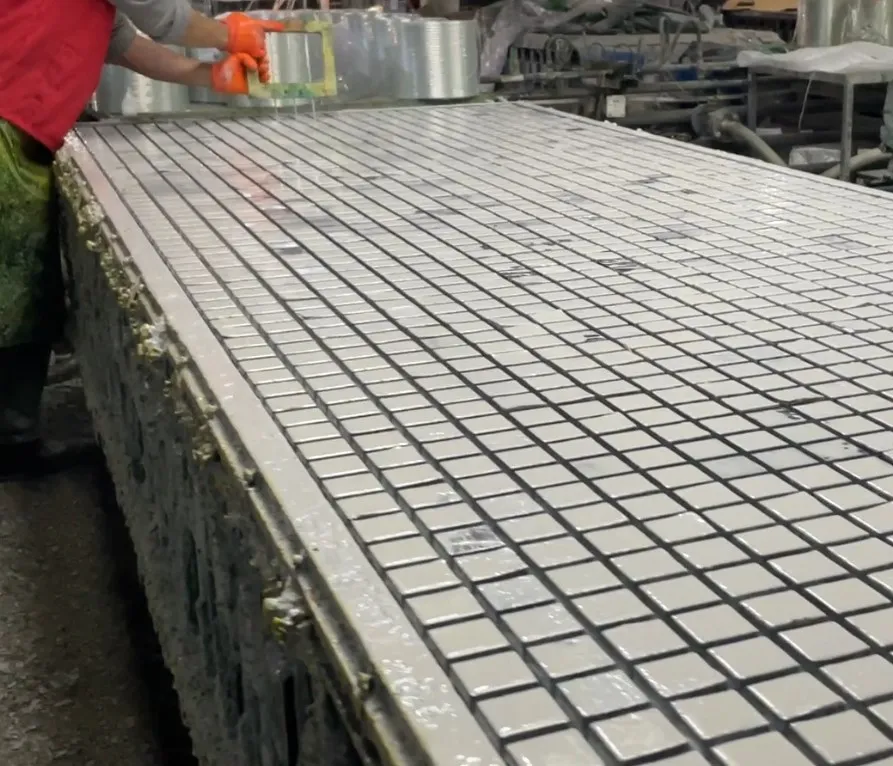loading...
- No. 9, Xingyuan South Street, Dongwaihuan Road, Zaoqiang County, Hengshui, Hebei, China
- admin@zjcomposites.com
- +86 15097380338
- Welcome to visit our website!
Understanding FRP Structural Components for Enhanced Construction Performance
FRP Structural Members A Modern Approach to Engineering Design
In the realm of civil and structural engineering, the quest for stronger, lighter, and more durable materials has led to the significant adoption of Fiber Reinforced Polymer (FRP) composites. These innovative materials combine high-strength fibers with a polymer matrix, resulting in structural members that offer numerous benefits over traditional materials. This article delves into the properties, applications, advantages, and challenges of FRP structural members, illustrating why they are becoming increasingly popular in modern construction.
Properties of FRP Structural Members
FRP structural members are typically made from strong fibers such as glass, carbon, or aramid, embedded in a polymeric resin. The resulting composite materials possess several advantageous properties
1. High Strength-to-Weight Ratio FRP members are significantly lighter than traditional materials like steel or concrete, while maintaining comparable or even superior strength. This feature enables easier handling and transportation, reducing overall project costs.
2. Corrosion Resistance Unlike traditional metals, FRP does not undergo chemical corrosion. This makes it particularly suitable for environments exposed to moisture, chemicals, and salts, extending the lifespan of structures and reducing maintenance needs.
3. Electrical Insulation FRP is a non-conductive material, making it an excellent choice for structures requiring electrical insulation or in environments where electromagnetic interference must be minimized.
4. Design Flexibility The versatility of FRP allows for intricate shapes and designs that can be molded to specific needs, enabling architects and engineers to push the boundaries of creativity in structural design.
Applications of FRP Structural Members
The unique properties of FRP composites have led to their application across a wide variety of sectors
1. Bridges FRP is increasingly used in bridge construction and retrofitting due to its lightweight and high strength. The material’s resistance to corrosion extends the usable life of bridges in harsh environments.
2. Buildings In building construction, FRP is utilized for beams, columns, and reinforcement. Its use in post-tensioning systems also allows for longer spans and reduced structural weight.
3. Infrastructure FRP is applied in various infrastructure projects, including marine structures, tunnels, and wastewater treatment plants, where its corrosion resistance is particularly beneficial.
frp structural members

Advantages of FRP Structural Members
The adoption of FRP structural members comes with a plethora of advantages
- Reduced Construction Time The lightweight nature of FRP materials enables quicker installation, thereby expediting construction timelines. Prefabrication processes further enhance efficiency.
- Sustainability FRP composites can contribute to sustainable practices in construction. Their long service life and recyclability at the end of their life cycle minimize waste and environmental impact.
- Cost-Effectiveness While the initial investment in FRP may be higher than conventional materials, the long-term savings in maintenance, durability, and reduced labor costs often justify the expense.
Challenges Facing FRP Structural Members
Despite their benefits, several challenges hinder the widespread adoption of FRP structural members
1. Cost Considerations The initial material costs for FRP can be higher than traditional materials. However, as technology advances and production methods improve, prices are expected to decrease.
2. Limited Standards and Codes The implementation of FRP in engineering is still evolving, with a lack of standardized codes and guidelines. This gap can create uncertainties for engineers regarding design and application.
3. Quality Control Ensuring consistent quality in the manufacturing of FRP components is crucial, as variability can significantly affect performance and reliability.
Conclusion
FRP structural members represent a significant advancement in engineering materials, providing an amalgamation of strength, durability, and versatility. As industries continue to embrace these innovative composites, the construction landscape is poised for transformation. Addressing the challenges associated with cost, standardization, and quality control will be essential for maximizing the potential of FRP. Ultimately, as technology progresses and greater awareness of the material’s benefits proliferates, FRP will likely play an increasingly pivotal role in the construction and infrastructure sectors, paving the way for a more sustainable and resilient built environment.
-
GRP Structures: The Future of Lightweight, High-Performance EngineeringNewsJun.20,2025
-
FRP Water Tank: High-Performance Storage for Corrosive and Clean Water SystemsNewsJun.20,2025
-
FRP Square Tube: The New Industry Standard for Chemical and Structural ApplicationsNewsJun.20,2025
-
FRP Pultruded Profiles: The Ultimate Choice for Lightweight Structural StrengthNewsJun.20,2025
-
FRP Handrails: The Safer, Smarter, and Stronger Choice for Modern InfrastructureNewsJun.20,2025
-
FRP Grating: The Smart Solution for Durable, Lightweight Industrial FlooringNewsJun.20,2025
-
Why Choose a Galvanized Water Tank for Your Storage NeedsNewsMay.21,2025
